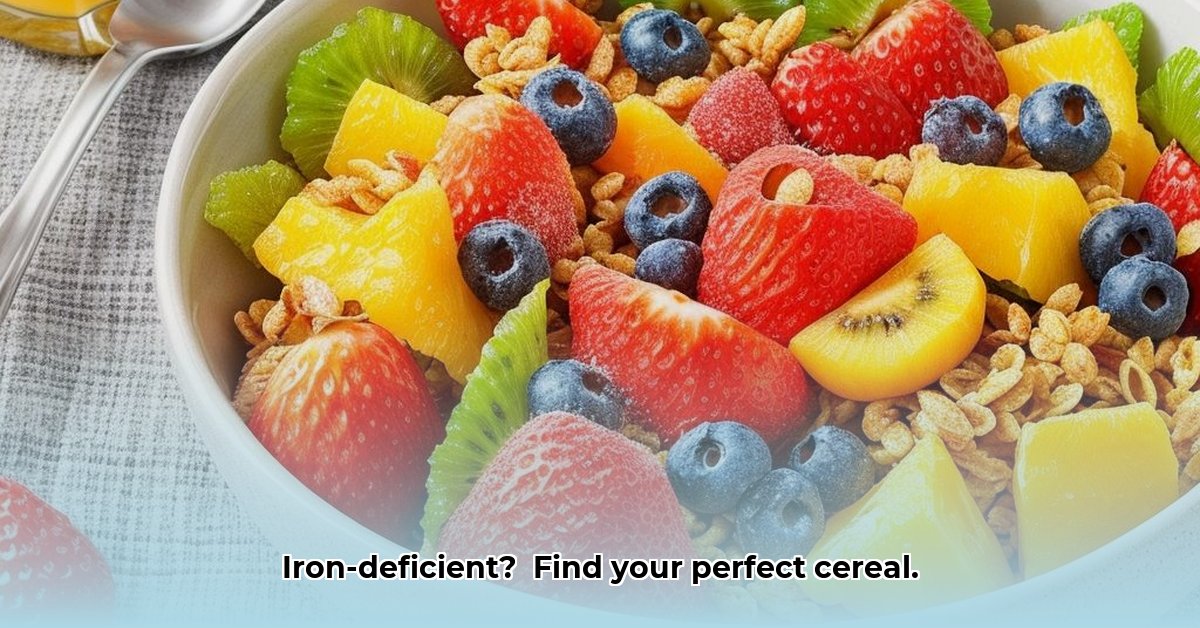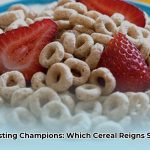Feeling drained and sluggish? Low energy might be a sign your iron levels need a boost. Choosing the right breakfast cereal is a simple and delicious way to increase your iron intake. This guide will help you discover the best high-iron cereals to supercharge your day. We’ll break down iron deficiency, identify who’s most at risk, and show you how to recognize the symptoms. We’ll also compare popular cereals, focusing on their iron content, fiber, sugar, and essential nutrients. Plus, you’ll learn proven strategies to maximize iron absorption and understand why a well-rounded breakfast is crucial. Let’s find the perfect cereal to help you feel energized and revitalized! For a more detailed list, check out this helpful resource.
Understanding Iron Deficiency and Exploring High-Iron Cereal Options
Do you find yourself constantly battling fatigue? Is low energy preventing you from enjoying life to the fullest? You might be experiencing the effects of iron deficiency, a condition where your body lacks enough iron, a critical mineral responsible for transporting oxygen throughout your system. This deficiency can lead to feelings of exhaustion, weakness, and even shortness of breath. While iron-rich foods like lean meats, seafood, and legumes are excellent sources of iron, incorporating high-iron cereals into your diet provides a convenient and palatable way to increase your daily iron intake and jumpstart your day. Studies have shown that iron deficiency can negatively impact cognitive function, making it difficult to concentrate and focus.
Identifying Iron Deficiency and Those at Increased Risk
Iron deficiency, often manifesting as iron deficiency anemia, is a prevalent health concern affecting individuals worldwide. It occurs when your body doesn’t have sufficient iron to produce adequate hemoglobin, the protein within red blood cells that carries oxygen to your body’s tissues and organs. This reduced oxygen supply can trigger a cascade of symptoms, ranging from mild fatigue to more severe health complications that may require medical intervention. Approximately 30% of the world’s population is affected by anemia, many of which are caused by iron deficiencies.
Certain groups are more susceptible to iron deficiency. Women of reproductive age, particularly those with heavy menstrual cycles, pregnant women experiencing increased iron demands, and individuals with underlying medical conditions or restrictive dietary patterns are at higher risk. Infants and young children also require sufficient iron for optimal growth and development. Do you experience persistent fatigue despite adequate sleep? Do you feel unusually weak, dizzy, or short of breath? These could be indicative of an iron deficiency. If you suspect you may have low iron levels, it’s essential to consult with your primary care physician or a qualified healthcare professional for proper diagnosis and treatment. Addressing iron deficiency promptly is crucial to prevent long-term health consequences.
Decoding the Cereal Aisle: How to Select the Best High-Iron Cereal
Navigating the cereal aisle can be overwhelming, with countless options boasting various health claims and nutritional profiles. Finding a high-iron cereal that aligns with your dietary needs and preferences doesn’t have to be a challenge. This comprehensive table provides a comparative analysis of popular high-iron cereals, helping you make informed choices:
| Brand & Product Name | Iron (mg/serving) | % Daily Value (%DV) | Fiber (g/serving) | Sugar (g/serving) | Other Key Nutrients | Approximate Price/Serving | Serving Size |
|---|---|---|---|---|---|---|---|
| Kellogg’s Frosted Mini-Wheats | 18 | 100% | 6 | 12 | Fiber, B Vitamins | $0.65 | 25 Biscuits |
| Post Honey Bunches of Oats | 18 | 100% | 2 | 6 | B Vitamins, Vitamin E | $0.55 | 1 Cup |
| General Mills Raisin Nut Bran | 9 | 50% | 7 | 13 | Fiber, Iron, B Vitamins | $0.70 | ¾ Cup |
| Original Cheerios | 12.6 | 70% | 3 | 1 | B Vitamins, Zinc | $0.60 | 1.5 Cups |
| Rice Chex | 9 | 50% | 1 | 6 | B Vitamins | $0.50 | 1 1/3 Cups |
| Kashi GOLEAN Cereal | 5.0 | 28% | 10 | 13 | Protein, Fiber, Vitamins and Minerals | $0.80 | 1 Cup |
Important Note: The values presented in this table are approximate and intended for comparison purposes. Always refer to the nutrition facts panel on the specific cereal box you’re considering, as nutrient content and serving sizes may vary depending on the product and any recipe changes. Prices are estimates and may fluctuate based on the retailer and geographic location. Iron deficiency affects approximately 10% of women of childbearing age in the United States, highlighting the importance of incorporating iron-rich foods into your diet.
While iron content is a primary consideration, it’s crucial to assess the fiber and sugar content of your chosen cereal. Fiber is essential for promoting healthy digestion, regulating blood sugar levels, and fostering a feeling of fullness. Opt for cereals with lower sugar content to minimize the intake of added sugars, which can contribute to energy crashes and other adverse health effects. What specific types of fiber, such as soluble or insoluble, offer the most significant benefits for digestive health?
Unlocking Iron Absorption: Proven Strategies
Selecting a high-iron cereal is just the first step. Optimizing iron absorption is equally important to ensure your body can effectively utilize the iron you consume. Pairing your cereal with foods rich in vitamin C (ascorbic acid), such as citrus fruits (oranges, grapefruits), strawberries, bell peppers, or a glass of orange juice, can significantly enhance iron absorption. Vitamin C acts as a potent enhancer, converting iron into a more readily absorbable form. Studies indicate that vitamin C can increase non-heme iron absorption by threefold!
Conversely, certain substances can hinder iron absorption. Calcium, prevalent in dairy products, and polyphenols, found in tea, coffee, and some legumes, can interfere with iron uptake. It’s advisable to avoid consuming these items in close proximity to your high-iron cereal. For instance, enjoying your cereal with milk is acceptable, but refrain from immediately following it with a cup of coffee or tea. What is the recommended time interval between consuming calcium-rich foods or beverages and high-iron cereals to maximize iron absorption?
Nurturing Overall Nutritional Health: Beyond Iron
While iron is undeniably crucial, a truly healthy breakfast extends beyond a single nutrient. Consider the comprehensive nutritional profile of your chosen cereal. What other essential vitamins and minerals does it provide? Is it a significant source of fiber? Does it have a reasonable amount of added sugar?
Think of your high-iron cereal as a component of a well-balanced breakfast, not a standalone solution. Complement it with other nutrient-dense foods to create a holistic nutritional experience. A balanced diet contributes to overall well-being, encompassing physical health, cognitive function, and emotional stability. Aim for breakfast to comprise approximately 20-25% of your total daily caloric intake to optimize energy levels and cognitive performance throughout the morning.
Your Comprehensive Guide to Finding the Perfect High-Iron Cereal and a Balanced Diet
Choosing the ideal high-iron cereal is a highly individualized decision. It hinges on aligning your unique nutritional requirements, dietary preferences, and budgetary considerations. If you have specific concerns regarding your iron intake or underlying health conditions, seeking guidance from your healthcare provider or a registered dietitian is highly recommended. They can offer personalized recommendations and empower you to make informed choices that support your overall health and well-being. Remember, a well-rounded diet rich in nutrient-dense foods, including a thoughtfully selected high-iron cereal, is fundamental to feeling your absolute best!
- Doctor Work Life Balance: Proven Strategies for Physician Well-being - November 20, 2025
- Find Your Work-Life Harmony: Quotes for a Fulfilling Life - November 18, 2025
- CRNA Work-Life Balance: Strategies for a Healthier Lifestyle - November 16, 2025













